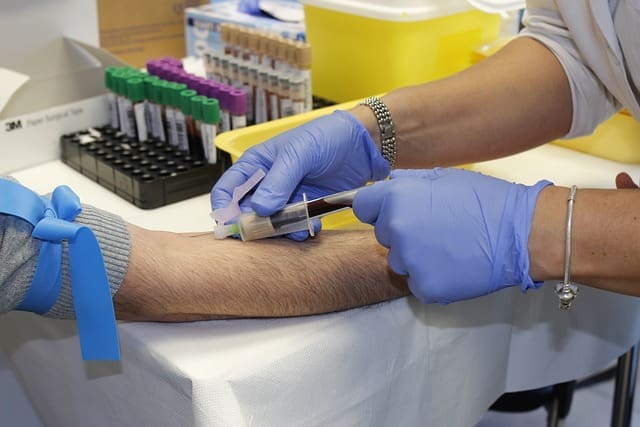If you’ve ever had your blood drawn, you know that finding a vein is one of the most difficult parts. Unfortunately, our veins don’t always cooperate, and they can be very difficult to locate, especially if you have small or flat veins. That’s where wireless vein finders come in handy.
Yes, vein finders are wireless. Unlike other medical devices that are not mostly wireless, vein finders are the opposite. They do not require a wired connection to work. Instead, these devices use either disposable or chargeable batteries to operate.
This blog post will discover more about these noteworthy devices and what they can do. So, let’s have a look.
What are Wireless Vein Finders?
A wireless vein finder is a medical device that uses infrared light to locate veins under the skin. The device consists of a small handheld unit that emits a beam of near-infrared light. When the beam strikes a vein, it is scattered and reflected back to the unit, where it is converted into an image.
The image is then displayed on a screen, allowing the user to see the vein’s location. Healthcare providers use wireless vein finders to aid in venipuncture or accessing a vein to draw blood or administer IV fluids. The device can also locate veins for other purposes, such as injections or intravenous access.
How Wireless Vein Finders Work
As mentioned above, wireless vein finders use infrared light to map the location of veins just beneath the skin’s surface. They do this by shining a light on the skin and then analyzing the reflectance.
The reflectance is affected by the absorption and scattering of light within the tissue. Blood absorbs more light than other tissues, so veins appear darker than surrounding tissue when viewed with an infrared camera. By analyzing the reflectance, wireless vein finders can create a real-time image of your veins that can be displayed on a screen or monitor. I came across Vein Finder Go 2.0, and it’s absolutely wireless.
The technology behind wireless vein finders is similar to pulse oximeters, which are also used to measure oxygen levels in the blood. In fact, many wireless vein finders also incorporate pulse oximetry into their design to provide both functions in one device.
The Benefits of Wireless Vein Finders
Wireless vein finders offer several benefits over traditional methods of finding veins.
- For example, they can be used on patients of all ages and skin types, even those with dark or tanned skin.
- They’re also less painful than other methods, such as needle sticks or probing with a finger.
- In addition, wireless vein finders are more accurate than alternative methods and allow phlebotomists to see deep veins that would otherwise be difficult to locate.
- And because they’re portable and battery-operated, they can be used anywhere, even in remote or rural areas where electricity is unavailable.
Applications for Wireless Vein Finders
Healthcare is one of the most important application areas for wireless vein finders. This tool helps find the veins under the skin for administering injections or drawing blood. Wireless vein finders can also be used for injection site selection, intravenous catheterization, and needle guidance during surgery.
It is a life-saving tool for patients with difficult venous access. Law enforcement agencies also use vein finders to identify veins in criminals for post-mortem analysis. In each of these cases, the ability to quickly and easily locate veins can help to improve patient safety and outcome.
FAQs
Let’s look at some frequently asked questions about wireless vein finders.
Q. Is it okay to use a wireless vein finder on kids?
A. Yes, wireless vein finders can be used on children of all ages. The device is non-invasive and painless, so it’s an ideal tool for finding veins in young patients.
Q. How long does learning how to use a wireless vein finder take?
A. Most people can learn how to use a wireless vein finder in just a few minutes. The devices are typically very easy to operate and come with clear instructions.
Q. Do wireless vein finders require any special training to use?
A. No, you don’t need any special training to use a wireless vein finder. However, it’s always a good idea to read the instructions with the device, so you know how to operate it properly.
Q. How much do wireless vein finders cost?
A. The price of a wireless vein finder can vary depending on the features and quality of the device. However, you can expect to pay between $1000 and $5000 for a good-quality wireless vein finder.
Q. Where can I buy a wireless vein finder?
A. Wireless vein finders are available online and in some medical supply stores. You can also rent or lease the devices from some medical equipment companies.
Q. Are there any safety concerns with using a wireless vein finder?
A. No, there are no known safety concerns with using a wireless vein finder. The devices are FDA-approved and have been used safely in hospitals and clinics for many years.
Conclusion:
Whether you’re a phlebotomist or a patient who needs blood drawn, a wireless vein finder offers several advantages over traditional veins. They’re more accurate and less painful and can be used on patients of all ages and skin types. If you’re looking for a convenient and easy way to find veins, consider using a wireless vein finder.
Featured Image by Antonio Corigliano from Pixabay




